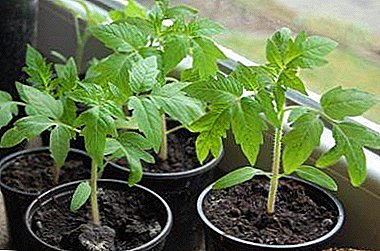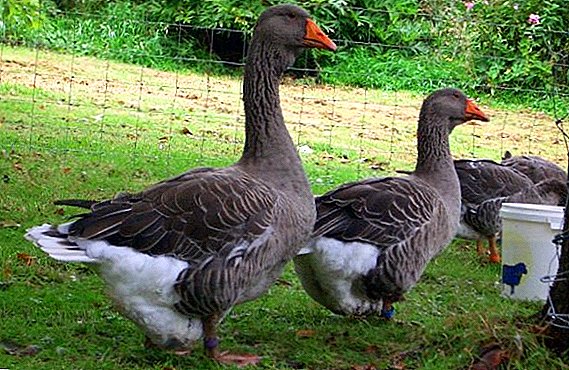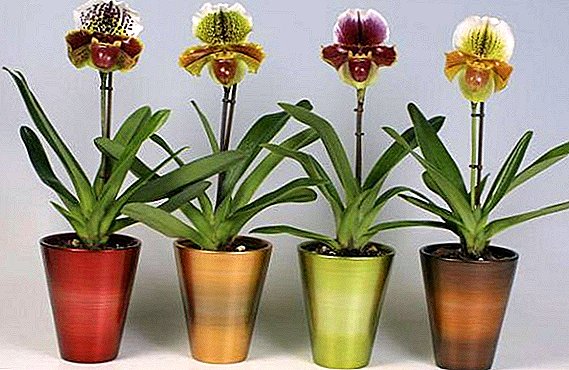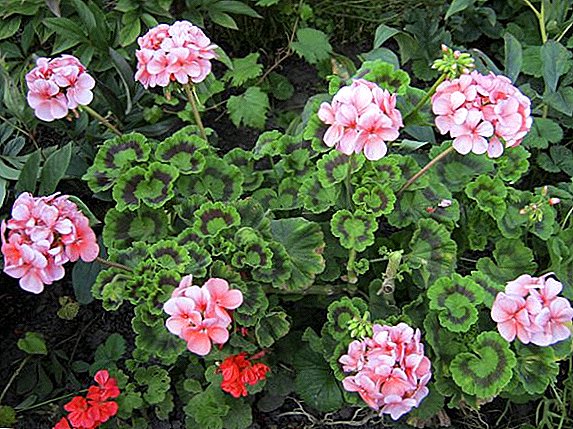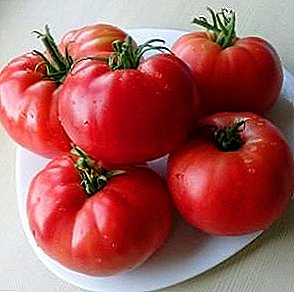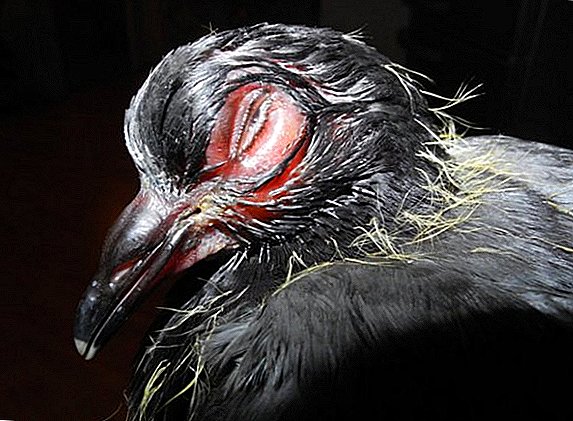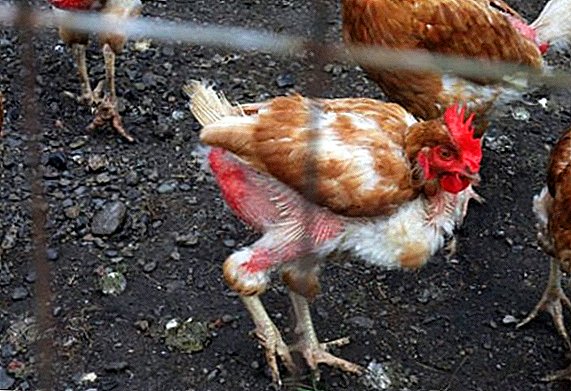
No matter how beautiful vegetables and fruits look on the shelves of stores, the products that are grown with their own hands will be the most attractive.
Indeed, you know that the fruits have not been subjected to any kind of chemical treatment and are not stuffed with chemicals.
So, if you want to grow, for example, tomatoes in your garden, then it will not be something time consuming.
You can find good advice here.
First you need to prepare the ground

The soil must be prepared in advance, preferably in the fall. First, remove all remnants of the previous crop, such as tops, roots.
Also remove weeds. Autumn need apply maximum amount of fertilizer: humus, superphosphate, potassium nitrate, in the case of high acidity of the soil - chalk or charcoal.
In early spring, ammonium nitrate must be applied, since when applied in the fall, this fertilizer will quickly dissolve and be washed.
Before planting, the soil is decontaminated, therefore a solution of copper sulfate is used (1 tablespoon of vitriol is used per 1 liter of water).
Now we are preparing planting material.

Any tomato bush begins its life in the form of seedlings. It can both buy and grow yourself.
For purchased seedlings there are a number of standards with which it must meet:
- Shoots and center conductor must be strong, straight, flexible;
- the leaves should be saturated green;
- there should be no traces of pests or diseases;
- Tomato variety should be suitable for your area;
- the selected variety must have “immunity” against diseases;
- the seedlings should not have flowers or fruits, such seedlings will be "shocked" by transplanting into the ground.
If you decide to grow your own seedlings on your own, then it is better to do this in one and a half to two months before the planned planting.
It is possible to grow up saplings both in cartridges, and in ordinary boxes. For seedlings it is better to buy a special soil mixture in order to avoid the presence of various pests. The prepared soil mixture should be poured into a container and compacted.
Then you can pour warm mixture of copper sulphate and mullein solution (for 10 liters of water you need half a teaspoon of vitriol and 3 tablespoons of mullein as a gruel). In one container you need to put 2 seeds, each in a separate hole with a depth of 1 - 1.5 cm. After the seeds need to sprinkle with prepared soil.
Before the seeds sprout, the temperature around the box or cassette should be 22-25 ° C. Also recommended cover the container with cling film. After the first shoots have appeared, the seedlings need to be rearranged to the most lighted place. In this phase, the temperature should be lower, namely 15-16 ° C during the day and 13-15 ° C at night.

Cooling seedlings contributes to its proper growth, but we should not allow drafts. Such a temperature regime must be observed for 10 days. After the expiration of this period, the temperature must be raised again to 18-22 ° C during the day and 15-18 ° C at night. After 5 - 7 days after the sprouts have grown, the seedling that is weaker must be removed from the pot.
Seedling needs regular wateringtherefore, small shoots need about 0.5 cups of water once a week. When 2 - 3 leaves already appear, watering is increased to 1 glass of water, and when 4 to 5 leaves, they increase the frequency of watering up to 2 times a week.
Among other things, seedlings need to be fed regularly. Fertilizers need to be made every 10 - 12 days. The first time you need to feed the seedlings after one and a half - two weeks after the first germination of potassium permanganate (for 10 liters of water - 1 g of potassium permanganate). On one seedling need 0.5 cups of solution.
After 10 days you need to make a mullein and urea (for 10 liters of water - 3 tablespoons of a pasty mullein and 1 tsp of urea). On one bush 1 glass of fertilizer.
If you have already chosen the exact date of planting, then 76-7 days before this, the seedlings need to be fed the last time. At 10 liters of water you need 1 tbsp. spoon nitrophoska and 1 tablet of trace element.
Open ground for seedlings means constant changes in weather conditions, therefore, the process of preparing seedlings should also include quenching. This process should begin in April - May.
To do this, leave the seedlings on the balcony with the windows open, but you need to monitor the temperature, because the seedlings will die when the temperature drops to 10 ° C. In addition, there should be enough water in the ground to prevent seedlings from fading.
During the first hardening, the seedlings must be shaded so that burns do not appear on the leaves. It is advisable to take preventive measures before planting to avoid the appearance of fungal diseases. To do this, seedlings need to use a solution of copper oxychloride (for 10 liters of water - 1 tbsp. Spoon).
It is also interesting to read about growing tomatoes in the greenhouse
We turn to the most important stage: planting seedlings

With the planting of seedlings is better not to rush, as possible night frosts can severely damage the bushes. It is necessary to take into account the peculiarities of the variety and the particular weather conditions of the region, but the most optimal and common time for planting is the second mid-May. It is necessary that daylight has free access to the landing site.
It is imperative to protect the bushes of tomatoes from gusts of wind. It is necessary to take into account the fact that tomatoes cannot be planted in those places where the representatives of the nightshade family and corn did not grow before.
It is also not recommended to plant tomatoes for two years in the same area. It would be better if earlier legumes, roots or greens grew in that place. It is not recommended to choose a place for landing in the lowlands, as in those places there will be high humidity.
The best time of day for disembarking will be either morning or evening. Holes need to dig in advance, for 4 - 5 days. The depth and width should match the size of the spade bayonet. The distance between neighboring bushes will depend on the characteristics of the variety, on average it will be 30–50 cm. If you plant the bushes in a staggered manner, then they will not be crowded.
The row spacing should be 50 - 70 cm. It is necessary to put the seedling in the hole vertically, sprinkling the soil pot. By the time of planting, the length of the stem of the seedling should be about 35 - 40 cm in length. Immediately after planting in the ground, you need to add a well-rotten humus, and then water with the calculation of 1 liter of water for 1 bush.
Do not forget about the right care
- Watering
- Garter
- Mulching
- Pruning
- Disease protection
Tomatoes react badly both to moisture overload and to drought. Therefore, watering the bushes should be quite rare, but with plenty of water.
Immediately after landing, you need to pause for 10 days. Then you need to fill the lack of water in the ground every 5 to 7 days. Approximately 10 liters of water should be spent on one bush. Water should be poured strictly at the root, so that the water does not get to escape or the next harvest.
Tomato bushes do not have enough moisture, if the leaves curl, fall flowers or ovaries.

If you grow stunted tomatoes, then they do not need to tie. If the variety is high, the garter is obligatory.
In order to tie up the bushes, while planting from the north side of the bush, you need to drive a 10 cm stake from the center conductor of the bush. In addition to stakes, you can use a special mesh or trellis. You need to tie up some soft material so that there is no mechanical damage to the stem.
You can tie up not only the stems, but also shoots with fruits, as it can simply break under the weight of the fruits.
To keep the water as long as possible in the ground, the ground around the bushes is covered with mulch. As the desired material you can use peat, rotted manure. But the best mulch for tomatoes will be chopped straw.
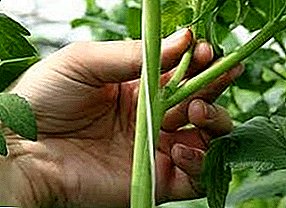
Pruning in tomatoes is called pasynkovaniem. This procedure is to remove the side shoots on the bushes (stepchildren). When the side shoots grew to a length of 4 - 6 cm, then it was time to remove them.
It is advisable to break them off, not to cut them off, and a trace should remain on the place of the remote stepson, which will dry out. Therefore, it is better to remove stepchildren in the morning. When the bushes begin to bloom, you will need to remove the leaves, which are located below the level of fruiting brushes.
The main purpose of pruning is to remove the extra load on the stem, because these extra shoots and leaves take away some of the nutrient juices from the brushes with fruits.
The most disastrous disease of a tomato is late blight.
First, the fungus infects the leaves, and then the fruit. If you do not take action, you can lose more than half the crop. As a medicine, you can use garlic solution (0.2 kg of minced garlic in a bucket of water), which you need to insist day.
Processing must be subjected to and bushes, and fruits. But the most effective drugs are fungicides. They can handle not only high-grade bushes, but also seedlings. In addition to phytophthora, tomatoes can damage and rot. This disease can spoil the taste and the fruits themselves.
To avoid this, you need to carefully water the bushes, make calcium nitrate (50 g per 1 sq. M.) And loosen the soil well.


